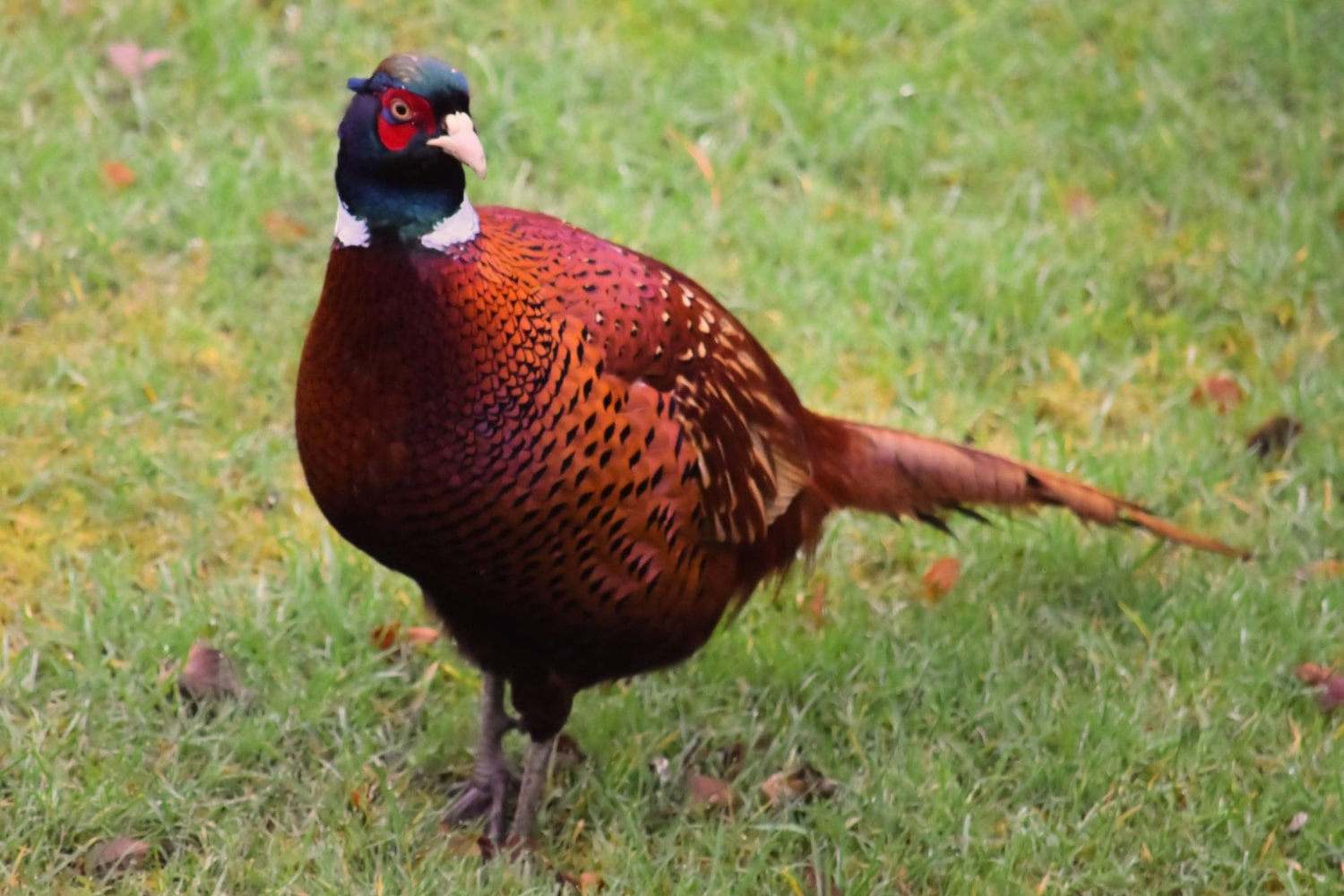Pheasants are striking and elegant birds that have fascinated humans for centuries with their colorful plumage and unique behavior. You might not know that pheasants have a long history of association with ancient civilizations, where they were seen as symbols of wealth and nobility. With their ornamental feathers and captivating courtship displays, pheasants have become beloved by nature enthusiasts, hunters, and bird breeders alike. These birds are not only beautiful but also ecologically important and full of behavioral intricacies. Below is a collection of fascinating and informative facts that shed light on the lives of pheasants.
- The pheasant family includes over 50 distinct species. The most widespread is the common pheasant, which originated in Asia and was later introduced to Europe, North America, and other parts of the world.
- Male pheasants are known for their vivid, iridescent feathers, which serve to attract females during the breeding season. Female pheasants are more modestly colored, helping them remain camouflaged while nesting.
- Pheasants have been known to humans since ancient times. During the Roman Empire, they were prized as ornamental birds and for their highly valued meat.
- While they are capable of flight, pheasants usually prefer to move around on foot. They can fly in short bursts but typically do so only when startled.
- During mating season, male pheasants engage in dramatic displays such as calling, dancing, and fighting with other males to win the attention of females. These displays are an important part of natural sexual selection.
- The common pheasant (Phasianus colchicus) is now so established in Europe that it is often considered a native species in many countries. It can frequently be found in meadows, hedgerows, farmlands, and forest edges.
- The green pheasant (Phasianus versicolor) is native to Japan and is recognized as the national bird of the country. Its plumage has a beautiful green sheen, and it often lives near human settlements.
- In the wild, pheasants typically live for about 3 to 5 years, though in captivity, with proper care, they can live up to 10 years. Their main natural threats are predators and human-related activities.
- Pheasants build their nests on the ground, usually in shallow depressions hidden among grass or bushes. A single female may lay up to 15 eggs per season and incubates them alone.
- These birds are omnivorous and feed on seeds, berries, insects, worms, and small invertebrates. They rely on keen eyesight to locate food in their environment.
- Some pheasant species, such as the eared pheasants, are less colorful but notable for their large size and graceful movements. They are well adapted to cold mountain regions of Central Asia.
- Pheasants are not migratory birds. They tend to stay in the same territory throughout the year, often forming close associations with specific landscapes.
- In many cultures, pheasants are symbols of bravery, prosperity, and fortune. In Chinese mythology, they are linked to the power of the sun and heroic strength.
- In England and France, pheasants have long been part of traditional hunting practices. They are often raised in game farms and released into the wild specifically for sport hunting.
- In the 20th century, selective breeding led to the creation of ornamental pheasant breeds with exceptionally vivid plumage. The golden pheasant (Chrysolophus pictus), for example, is known for its stunning red and gold feathers.
- Male pheasants can be quite aggressive during the breeding season, often chasing and fighting rivals to defend territory or attract mates. This is part of their competitive mating strategy.
- Today, pheasants are found in zoos and bird farms not only as display animals but also for environmental education. In some regions, they are used in conservation projects aimed at restoring natural populations.
- In certain ecosystems, pheasants serve as bioindicators of environmental health. Their presence indicates a balanced habitat with sufficient food and cover.
- The call of a pheasant is loud and distinctive, often heard in the early morning or during the mating season. These calls help mark territory and signal other birds in the area.
- Some exotic pheasants, like the imperial pheasant, are remarkable for their unusual appearance and fan-shaped tails. These rare species are typically found in the tropical forests of Southeast Asia.
Pheasants are not only an aesthetic marvel of nature but also play an important role in ecosystems and human cultures alike. These interesting facts reveal how diverse and significant these birds truly are. Observing and learning about pheasants inspires deeper respect for nature and a desire to protect wildlife. Knowledge like this connects us more closely with the living world and encourages thoughtful environmental stewardship.





